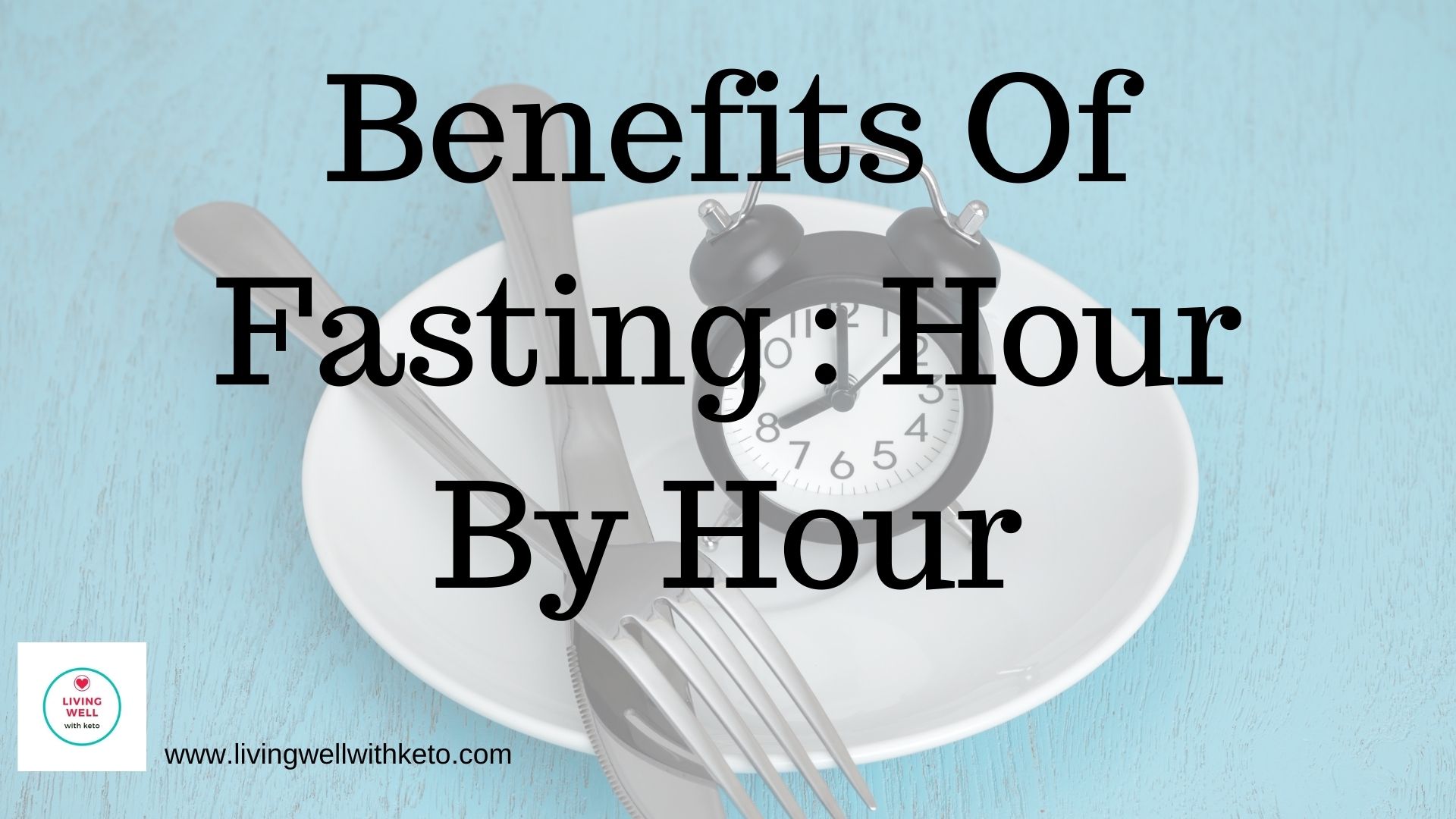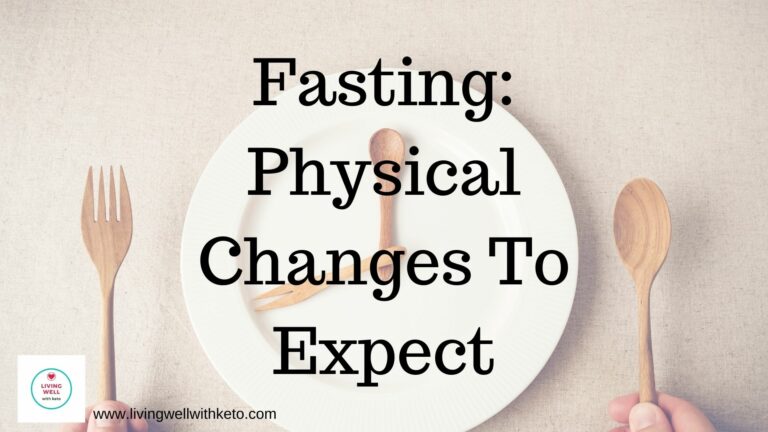Fasting is great for health as well as weight loss. Discover what happens when fasting – physical changes to expect, and what they mean.
To start, lets get one thing out of the way:
Humans do not need to eat all the time: We are designed by evolution to go hours, or even days, in between meals. When we fail to do this, we leave ourselves susceptible to multiple health issues.
We are not cows, and we’re not designed to graze all day. When we eat too often we don’t give ourselves chance to enter the super healthy state of autophagy.
This is the natural cleaning and repair program that is vital to our health and well-being.
Importantly, by eating all the time, we reduce or completely stop this vital process.
There is no doubt that when you fast, you are doing something super healthy for your body. You’re giving it the opportunity to clean out old and damaged cells.
Further, a 72-hour fast can give you a complete immune system reset.
Beginning a fast, and the use of stored glycogen.
This is the stage that begins the moment you finish your last meal. You can expect it to last around 6 hours, although exact times will vary between individuals.
During this stage your insulin levels will begin to drop as you use your supply of glycogen.
Exactly how much glycogen you have stored will depend on your diet immediately before the fast.
You’ll find that you’ll use your available glycogen faster if you’ve been following the keto diet or any other low carbohydrate eating plan.
This is because you’ll have less glycogen stored than someone eating a high carb or the Standard American Diet
Physical changes of fasting :Depletion of stored glycogen
At some stage after about 6 to 24 hours you’ll have powered your way through your stored glycogen.
Your body will begin to find new ways of meeting it’s immediate energy needs.
It does this by a process known as gluconeogenesis.
This is the process that will use damaged proteins to fuel your body. Importantly for your health, these proteins will be replaced with new proteins when you end your fast and eat your first meal.
Switch to alternative metabolic pathway
Between 24 hours and 36 hours your body will be increasingly dependant on your second metabolic pathway to meet it’s energy needs.
Once your glycogen stores are depleted, attention will turn to your fat stores instead.
These fat stores will be converted into ketones for fuel, and you’ll be in the healthy state of ketosis.
It’s this state that is the aim of the keto diet. The keto diet aims to mimic the effects of a fast by consuming very low levels of carbohydrates.
While producing ketones, your muscles are able to burn fat for fuel directly. This will add to the amount of energy that will be available to you while you fast.
As you begin to burn fat, you will find that your hunger subsides or disappears altogether.
It’s important to note at this stage that you will not lose muscle.
This is because the fast causes a release of growth hormone which enables you to maintain your muscle mass.
Fasting : Physical Changes To Expect
As you enter the third day of your fast, your metabolic rate will reach its maximum increase.
You can expect this increase to be about 10% of your normal rate.
Its because of this increase that many people find that they have more energy. They’re often more alert and focused after the first three days of their fast.
This metabolic improvement provides you with one of the major advantages of fasting over a calorie restricted diet.
When you restrict calories your body senses the deficit and attempts to hold on to as much energy as it can. It does this by reducing your metabolic rate.
Further, you’ll stop using energy on non essential growth such as your hair or nails.
Wherein lies the problem with calorie restricted diets: as your metabolism falls, you require less energy. You need to reduce your daily intake to ever lower levels to maintain your weight loss.
Worse, the moment you return to a normal daily intake, your weight will go back up. More often than not, you’ll end up heavier than you were before you started.
Unfortunately, you’ll find that it takes a long time for your metabolic rate to return to it’s original pre- diet level.
In contrast, fasting increases your metabolism. This increae makes perfect sense in terms of our survival.
During our evolution we would have been subjected to long periods of time between meals. If our metabolism and cognitive function decreased during this time, we would be less able to hunt for more food.
It was vital for our survival that, during a fast, we were alert and able to perform at a high physical level.
Therefore, over time, we developed processes to increase metabolism when we were without food.
Increased Autophagy with fasting
The science is still vague about exactly when autophagy begins when we are fasting.
However, at some point after about 12 hours or so, the lack of food triggers the start of this process.
On top of this increase in metabolic rate, autophagy is amazingly beneficial to our health.
Nature has designed us so that we are able to make the most of those times that we have nothing to eat.
Autophagy is important for health. When we do not enter this state often enough, there is no doubt: our health suffers.
One of the reasons that people can become more ill as they age is due to a decrease in the times spent in autophagy as they get older.
There are three main types of Autophagy, and each is in involved in the eradication or engulfment of damaged cells or proteins, engulfment of cytoplasmic material, eradication of pathogens and dealing with misfolded proteins.
As our bodies contain both damaged cells, and senescent cells it’s easy for even a non-scientist to understand that Autophagy is not only a natural, but a necessary process to clean out all these damaged cells that are accumulated over time. These cells trigger inflammation which is now implicated in the development of numerous diseases, if not all of them 1 .
Further, Autophagy and the immune system are now known to be linked and the immune system uses Autophagy to regulate many of it’s systems. Autophagy is involved in seeking out pathogens, and has a role in the fields of vaccines and aging 2
For full details of autophagy see here and here
Importantly, once autophagy is underway, it will continue for as long as we eat nothing. Therefore, if you’re fasting for health reasons, you’ll need to make sure you eat nothing at all during the fast.
There is no clear research which has discovered exactly how much we need to end autophagy.
However, it’s generally accepted that any amount of food, no matter how small, should be considered to be able to switch off this process.
For this reason, it’s important to fast with no food, and only water to drink. Opinions vary about drinking coffee or tea, so you’ll have to decide for yourself.
Certainly, “fasts” that include fruit juice, or some other food item are not really fasts at all. You just won’t get the benefit of fasting if you follow these sorts of eating plans.
There’s no way to cheat on this: Your body will only get the health benefits of a fast if you eat nothing at all.
How often should you fast?
Again, there is no clear science to help you out. It has been suggested that even a short fast is beneficial for your health.
Hence the popularity of Intermittent fasting.
Intermittent fasting certainly has a lot of fans, and there is evidence that this is very beneficial for both weight loss and health.
An intermittent fast of between 12 to 23 hours can be practiced every day. The 23-hour fast will leave you with time for one meal only.
People who follow this one meal a day (OMAD) plan find it works well with their individual metabolism and social life .
More commonly, a 16/8 intermittent fast is used as a daily practice. This allows for an 8-hour eating window, with people able to enjoy two meals each day.
The longer fasts of more than 36 hours seem to have more value for those people who want to fast as a way of reversing or preventing disease.
A 72-hour fast can be used to completely reset the immune system.
In our opinion, it’s reasonable to expect that there is a lot to benefit by mixing different lengths of fast.
You can increase your chances of obtaining the maximum weight loss and health benefits by swapping and changing the length of your fast.
The mix and match method of fasting
When approaching fasting in a mix and match way, you can combine the many different lengths of fasting.
For example, you could practise a 16/8 intermittent fast each day, with a 36-hour fast once every one or two weeks.
Following this you could try a longer fast once you’ve got used to the shorter fasts.
A 72-hour fast has many benefits for the immune system, and this could be done once every few months
Always bear in mind that more research is needed with regard to best fasting lengths. Nobody is able to be more exact about the time we should fast.
The other important point is that you should always stop any fast if you’re feeling sick. Don’t force yourself to continue if it’s a major effort and you don’t feel well.
We hear a lot of stories about people pushing on with a fast, and ignoring uncomfortable and potentially worrying physical symptoms.
If this happens to you, leave your fast and try again at a later date. You may simply need more practice at fasting before your body can cope with a longer one.
Certainly, if you’re fat adapted on the keto diet, fasting is going to be easier.
The take home message
Although more research is needed, there is overwhelming evidence that fasting is good for both weight loss and health benefits.
It is much more effective than calorie controlled diets, and a fast will trigger autophagy.
Further, if you want to reach ketosis through the keto diet, a short fast beforehand will get you there more quickly. Intermittent fasting will also help you into ketosis as quickly as possible.
Start with short fasts, or intermittent fasts and only try one of the longer fasts once you can easily cope with the shorter ones.
Always stop a fast if you feel unwell.
Further, you should consider seeking the advice of your medical provider if you’re taking medication or have an ongoing medical problem.
Fasting is not only free, it’s also an amazing tool with which you can achieve all your weight loss and health goals.









